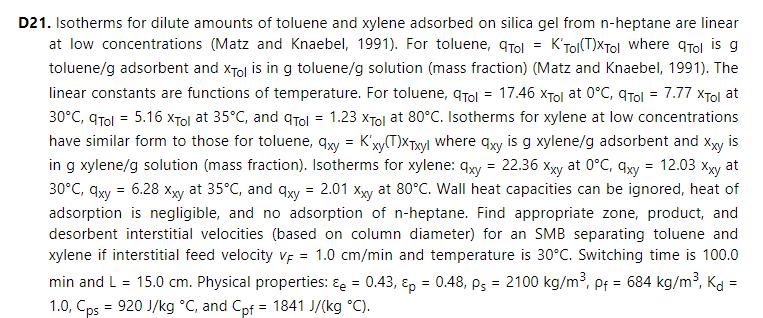Use a thermal swing adsorption process to remove traces of toluene from liquid n-heptane using silica gel
Question:
Use a thermal swing adsorption process to remove traces of toluene from liquid n-heptane using silica gel as adsorbent. Adsorber operates at \(1.0 \mathrm{~atm}\). Feed is \(0.11 \mathrm{wt} \%\) toluene and \(99.89 \mathrm{wt} \% \mathrm{n}\)-heptane at \(35^{\circ} \mathrm{C}\). Superficial velocity of feed is \(5.50 \mathrm{~cm} / \mathrm{min}\). Adsorber is 0.85 meters long and during feed step is at \(35^{\circ} \mathrm{C}\). Feed is continued until toluene breakthrough occurs. Thermal regeneration/purge is done with counterflow of pure n-heptane at \(80^{\circ} \mathrm{C}\) continued until all xylene is removed. Superficial velocity during thermal regeneration/purge is \(9.0 \mathrm{~cm} / \mathrm{min}\). Data are in problem 20.D21. Use solute movement theory to
a. determine breakthrough time for toluene during feed step.
b. determine thermal breakthrough time during both purge and feed steps.
c. determine xylene outlet concentration profile during regeneration/purge.
Data From Problem 20.D21

Step by Step Answer:

Separation Process Engineering Includes Mass Transfer Analysis
ISBN: 9780137468041
5th Edition
Authors: Phillip Wankat





